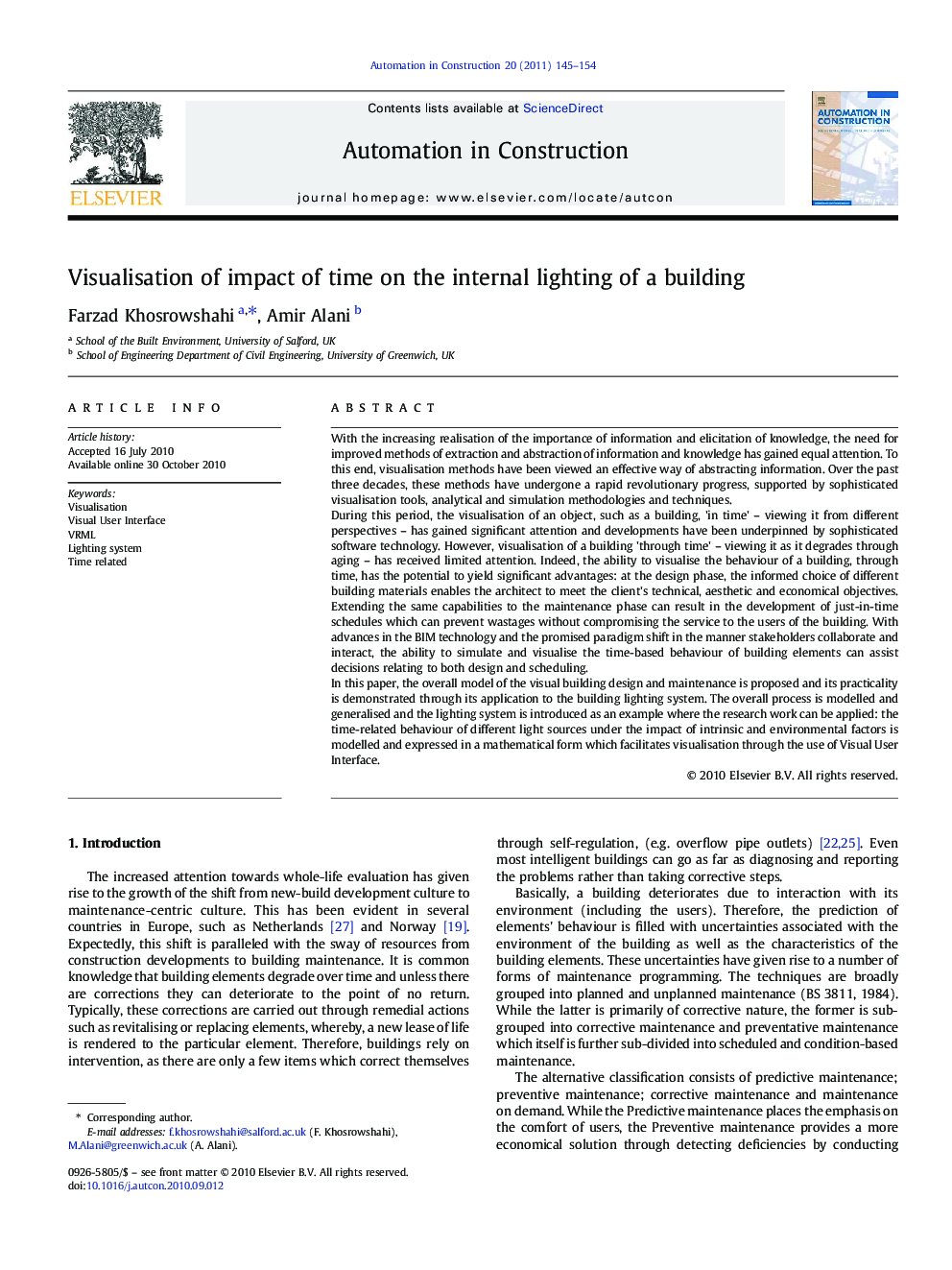| Article ID | Journal | Published Year | Pages | File Type |
|---|---|---|---|---|
| 247098 | Automation in Construction | 2011 | 10 Pages |
With the increasing realisation of the importance of information and elicitation of knowledge, the need for improved methods of extraction and abstraction of information and knowledge has gained equal attention. To this end, visualisation methods have been viewed an effective way of abstracting information. Over the past three decades, these methods have undergone a rapid revolutionary progress, supported by sophisticated visualisation tools, analytical and simulation methodologies and techniques.During this period, the visualisation of an object, such as a building, 'in time' – viewing it from different perspectives – has gained significant attention and developments have been underpinned by sophisticated software technology. However, visualisation of a building 'through time' – viewing it as it degrades through aging – has received limited attention. Indeed, the ability to visualise the behaviour of a building, through time, has the potential to yield significant advantages: at the design phase, the informed choice of different building materials enables the architect to meet the client's technical, aesthetic and economical objectives. Extending the same capabilities to the maintenance phase can result in the development of just-in-time schedules which can prevent wastages without compromising the service to the users of the building. With advances in the BIM technology and the promised paradigm shift in the manner stakeholders collaborate and interact, the ability to simulate and visualise the time-based behaviour of building elements can assist decisions relating to both design and scheduling.In this paper, the overall model of the visual building design and maintenance is proposed and its practicality is demonstrated through its application to the building lighting system. The overall process is modelled and generalised and the lighting system is introduced as an example where the research work can be applied: the time-related behaviour of different light sources under the impact of intrinsic and environmental factors is modelled and expressed in a mathematical form which facilitates visualisation through the use of Visual User Interface.
Research Highlights► Meeting the challenges associated with producing a Just-in-Time solution to building maintenance. ► Offering a holistic life-cycle approach to building design and maintenance scheduling. ► Exploring the benefits of 4D, with the 4th dimension being the ability to travel through time, to help with design and maintenance decisions. ► Providing Integrating building component life-cycle simulation with building information model and visual interface.
